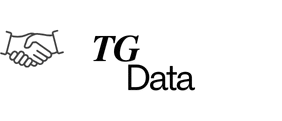Setting prices correctly is an art. Anyone can do it quickly with a low ROI or even at a loss. Getting the most out of your products requires a little more work. This year we applied more refined strategies. We analyzed products individually using these criteria.
1 Setting prices based on sales objectives
2 Competitor prices and inventory
3 Setting prices based on purchasing possibilities
4 Prices based on target ROI
5 Prices based on product potential
6 Prices based on stock
Setting prices based on sales objectives
We want to achieve a minimum turnover of 200k during these two Christmas months. To do this, we have to sacrifice some products in the sense that we have to lower their price and sell them a little cheaper than we had planned. This is a measure accurate mobile phone number list that we will apply in the final stretch starting on December 10th in case that objective is in danger.
Competitor Prices and Inventory
Last night I saw that one of the predictions I had made in the morning had come true correctly. A Lego set had started selling with a spectacular ROI of 200%. About two weeks ago what are the trends for catering in 2024? they had started selling with a 100% ROI but I decided to raise the price because I saw that the competition did not have much. This morning it was clear that the competitors’ stock was almost gone and it was our turn. That is what happened. We sold 4 units at a spectacular price. We still have more than 50 units left that will be released with a very attractive ROI.
Setting prices based on purchasing possibilities
Yesterday we made another decision on a best-selling product. We have reserved it until now because we “only” had 120 units in stock and it was not certain vietnam data that it would be possible to replenish it. Yesterday the possibility of buying 300 more units arose so we lowered the price to be competitive. With the price change, sales began. Let’s hope that the competition doesn’t adjust its prices and start a price-cutting war where there are no winners.
Prices based on the target ROI
There are products that must achieve a minimum ROI given the time they have been in the warehouse. The first Lego sets after two years must reach at least 75% ROI. This point must always be combined with the next one.
Prices based on the product’s potential
It is also a question of the set’s potential. If it is unlikely that the final consumer will be willing to pay that 75% ROI, you have to settle for less. It is difficult for me to sell faster for less because in the end a sale with more is like two sales but in one you have no product cost. I don’t know if you understand what I am going with.

